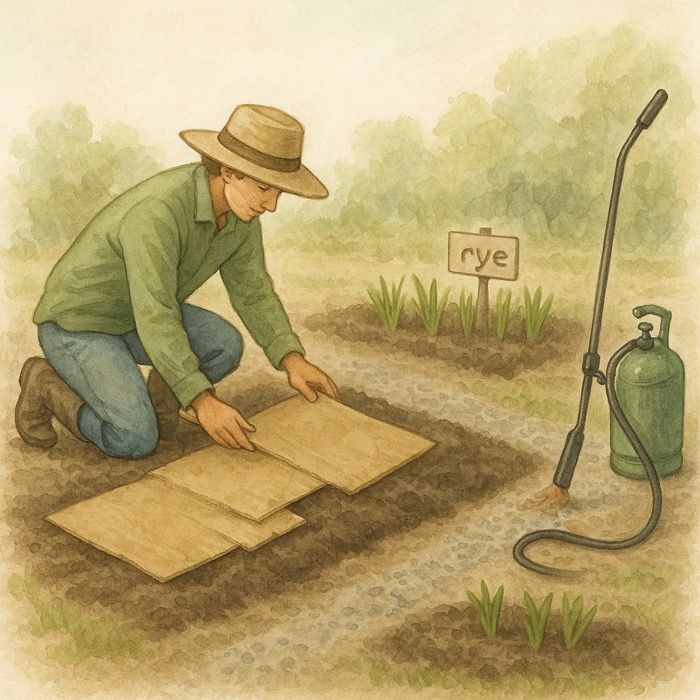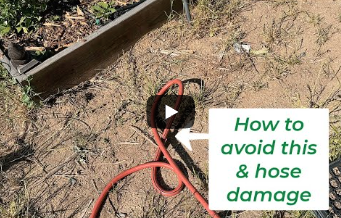Creating a Haven for Beneficials: Enhancing Your Garden’s Ecosystem for Spring
In the world of gardening, the term “beneficials” refers to a variety of insects and organisms that play a crucial role in the health and vitality of our gardens. These include pollinators like bees and butterflies that aid in plant reproduction, and predatory insects such as ladybugs and lacewings that help manage pest populations. Additionally, beneficials also encompass soil-dwelling organisms that contribute to the nutrient cycle, enhancing soil health. As we anticipate the arrival of spring, our focus shifts to creating a welcoming environment for these essential creatures. By taking deliberate steps now, we can ensure that our gardens not only bloom with beauty but also teem with a thriving ecosystem of beneficials. Let’s explore how we can transform our gardens into a sanctuary for these vital garden allies.
1. Understanding Your Beneficial Insects
Before inviting beneficials into your garden, it’s vital to understand who they are and what they do. Beneficial insects can be broadly categorized into two groups: pollinators and predators. Pollinators like bees, butterflies, and certain types of beetles and flies are indispensable for the fertilization of many plants, leading to fruit and seed production. Predatory insects, such as ladybugs, lacewings, and praying mantises, are natural pest controllers, feeding on aphids, mites, and other garden pests. Even the less-noticeable soil dwellers, like earthworms and certain types of beetles and flies, play a significant role in decomposing organic matter, thus enriching the soil. Understanding the specific needs and habits of these beneficials is the first step in creating a supportive environment for them.
2. Planting Early-Blooming Flowers
Early-blooming flowers are like a welcome mat for beneficial insects emerging from dormancy. Planting a variety of early bloomers ensures a steady supply of nectar and pollen. Consider adding native plants, as they are often well-adapted to local climate conditions and local beneficials. Flowers like snowdrops, winter aconite, and heather bloom even in chilly weather, offering an early food source. Remember, the goal is to provide a succession of blooms throughout the growing season, ensuring that beneficials have a consistent food source.
Master Gardener Tip: If you focus on healthy soil, and healthy plants, they will come. A balanced, happy garden will naturally attract beneficials. These 10 steps are just icing on the cake, but they need the solid foundation to provide success.
3. Diversifying Plant Selection
A diverse garden is a resilient garden. Incorporating a wide range of plants not only makes your garden aesthetically pleasing but also supports a broader spectrum of beneficials. Herbs such as dill, fennel, and parsley are particularly effective in attracting predatory insects, which often lay their eggs among these plants. The larvae then have immediate access to food once they hatch. Flowering plants like coneflowers, yarrow, and goldenrod are excellent for attracting pollinators. Remember, the key is variety – the more diverse your garden, the more beneficials it will attract and sustain.
4. Creating a Water Source
Just like us, insects need water to survive. However, their water needs are often overlooked in garden planning. Creating a water source can be as simple as a shallow dish filled with pebbles and water. The pebbles provide safe landing spots for insects to drink without the risk of drowning. Regularly changing the water also prevents mosquito breeding. If space allows, consider a small garden pond, which can attract a wider range of wildlife, including beneficial amphibians like frogs and toads.
5. Avoiding Chemical Pesticides
Chemical pesticides are not selective; they kill beneficial insects along with the pests. Adopting an integrated pest management (IPM) approach can help maintain a healthy balance in your garden. This involves monitoring for pests and taking action only when necessary, using methods that are least harmful to beneficials. Introducing natural predators, using barriers or traps for pests, and employing organic pesticides as a last resort are all part of this approach. Remember, a few pests are normal and can even be necessary to sustain predatory beneficials.
6. Providing Shelter
Providing a variety of habitats is key to attracting a diverse range of beneficials. Leaving some areas of your garden a little wild can offer ideal nesting sites. A log pile or a leaf pile can be a haven for many insects. Consider leaving a patch of bare earth for ground-nesting bees. Similarly, allowing a dead tree to stand (if safe to do so) can provide essential nesting sites for many species of insects and birds.
7. Using Companion Planting
Companion planting is a method of growing plants together for mutual benefit. For example, planting marigolds near your vegetable garden can help repel nematodes and other pests, while also attracting beneficials. Similarly, planting basil near tomatoes can improve their growth and flavor, in addition to repelling flies and mosquitoes. The key is to research and understand which plant combinations work best for your specific garden needs and goals.
8. Mulching Sparingly
While mulch is beneficial for moisture retention and weed suppression, over-mulching can deter ground-nesting beneficials. A thick layer of mulch can make it difficult for bees to access soil. Using a lighter layer of organic mulch, like straw or leaf mold, can provide the benefits of mulching while still being friendly to beneficials. In some areas, leaving the soil bare can be more beneficial, especially for accommodating ground-nesting bees.
9. Installing Insect Hotels
Insect hotels are man-made structures designed to provide shelter for beneficial insects. They can range from simple bundles of bamboo canes to elaborate multi-section structures. These hotels can offer a refuge for a variety of beneficials, from solitary bees to ladybugs. Placing them in a sheltered, sunny spot in your garden can maximize their usefulness. Creating your own insect hotel can also be a fun and educational DIY project.
10. Practicing Patience
Attracting beneficials to your garden is a gradual process. It involves creating a welcoming environment and waiting for the ecosystem to respond. Over time, as your garden becomes more established as a habitat for beneficials, you will start to see the fruits of your labor. This not only includes a reduction in pest problems but also a garden that is vibrant, dynamic, and full of life.
By implementing these strategies, your garden will become a thriving ecosystem, bustling with beneficial insects. This not only aids in the health of your garden but also contributes to the biodiversity of your local area. Happy gardening, and may your garden be a buzzing, blooming paradise this spring!
More From Our Master Gardener
Recent Posts

❄️ Snow as Fertilizer – The Truth About “Poor Man’s Nitrogen”

5 Unexpected Winter Weed Control Strategies (That Don’t Involve Mulch)

Harnessing Winter Sun – Passive Solar Tricks for Your Garden

How to Grow Spinach – The Ultimate Beginner’s Guide for Tender, Nutritious Leaves

How to Grow Peas: The Ultimate Beginner’s Guide for Sweet, Crisp Harvests














